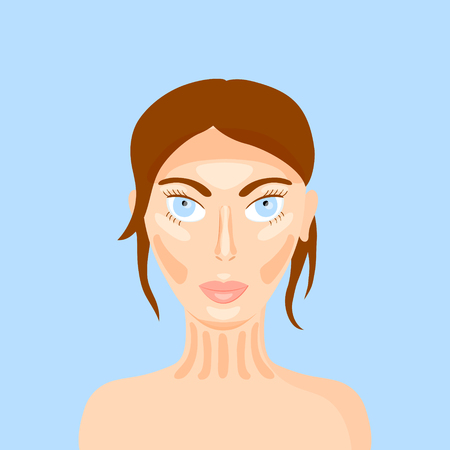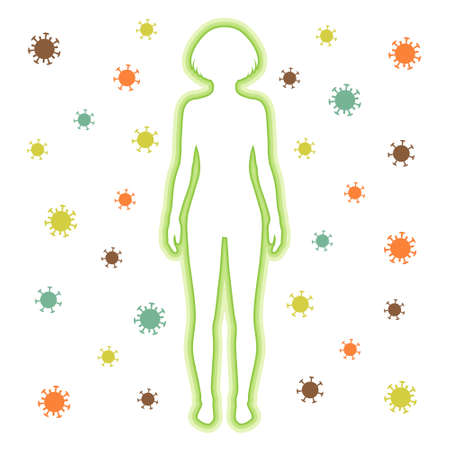What is LED Light Therapy?
LED light therapy, or Light Emitting Diode therapy, is a gentle and non-invasive skincare treatment that’s become a buzzword in the UK’s natural beauty scene. Unlike harsh chemicals or invasive procedures, LED therapy uses specific wavelengths of light to target various skin concerns—think acne, fine lines, and dullness. Originally developed by NASA for wound healing, it’s now enjoying a fresh wave of popularity in British homes as a clean, tech-savvy alternative for glowing skin.
But what exactly happens when you sit under one of these futuristic masks? The science is rather fascinating: different colours of light penetrate the skin at varying depths, triggering natural processes like collagen production or bacteria reduction. This means you can tailor your treatment to your unique needs without leaving your living room—a proper treat for anyone looking for self-care that fits the fast-paced UK lifestyle.
Here’s a quick glance at how various LED lights work their magic:
| Light Colour | Main Benefit | Typical Use in the UK |
|---|---|---|
| Red | Boosts collagen & reduces wrinkles | Mature skin & anti-ageing routines |
| Blue | Kills acne-causing bacteria | Teenagers & adults with blemish-prone skin |
| Green | Evens out pigmentation | Addressing sun spots and redness from brisk weather |
The appeal lies not just in results but also in its eco-friendly credentials—no need for single-use products or harsh chemicals. As more Brits seek out natural and sustainable options for self-care, LED light therapy stands out as a fresh and promising solution. The question remains: are at-home devices bought in the UK truly worth it? Let’s explore further in the next section.
UK-Approved At-Home LED Devices: What’s on Offer?
When it comes to at-home LED light therapy, the UK market offers a delightful mix of trusted high street names and niche online discoveries. Whether you’re looking for a sleek mask to pop on during your favourite telly show or a targeted wand for those stubborn patches, there’s something for every skin concern and budget. Here’s a handy overview of popular device types and where you might spot them:
| Device Type | Key Features | Popular Brands in the UK | Where to Buy |
|---|---|---|---|
| LED Face Mask | Full-face coverage, multi-colour light options (red, blue, amber), adjustable settings | CurrentBody, No7, MZ Skin | Boots, John Lewis, brand websites |
| LED Handheld Wand | Portable, targets specific areas (blemishes, fine lines), great for travel | Sensse, Foreo ESPADA | Amazon UK, Lookfantastic, high street chemists |
| Patches & Spot Devices | Compact, perfect for on-the-go spot treatments, often with blue or red light only | DPL Nuve, Neutrogena Light Therapy Pen* | Cult Beauty, online retailers (*availability may vary) |
| Body LED Panels | Larger surface area, ideal for back or chest treatments, multi-use settings | Dermalux Flex MD | Specialist clinics, direct from brand websites |
What Makes These Devices “UK-Approved”?
Safety Standards and Regulations
The devices above are typically CE-marked and comply with UK safety regulations—an essential tick for peace of mind. Many also come with clear instructions and customer support based in the UK.
A Natural Choice for Glowing Skin
If you love products that blend effortless use with visible results (without harsh chemicals or invasive treatments), these at-home LED devices are right up your alley. Plus, with so many reputable British retailers stocking them, you can shop with confidence and ease.

3. Safety and Effectiveness: Do They Really Work?
If you’re considering LED light therapy at home, understanding both safety and effectiveness is key—especially here in the UK, where consumer health is a top priority. Let’s take a closer look at what regulations say, how real users are finding these devices, and what the latest science reveals.
UK Safety Regulations for At-Home LED Devices
In the UK, any electrical beauty device must comply with strict standards before hitting the shelves. The UKCA (UK Conformity Assessed) marking is your first sign of compliance. It shows that the manufacturer has followed all relevant British safety requirements. Additionally, the Office for Product Safety and Standards (OPSS) monitors devices to ensure they don’t pose risks such as burns or eye damage.
| Regulation | What It Means for You |
|---|---|
| UKCA Mark | Certified safe by UK standards; must be clearly visible on packaging |
| OPSS Oversight | Regular checks and swift removal of unsafe products from the market |
| User Instructions | Clear guidelines required for safe home use, especially around eyes and sensitive skin |
Real User Stories: The Good, the Bad, and the Glowing
Across Britain, at-home LED devices are gaining popularity—but do they live up to expectations? Many users report brighter, calmer skin after regular use. For example, Sarah from Manchester shared that her “skin tone evened out after three weeks,” while Tom in Bristol saw a “reduction in breakouts.” However, some users have experienced mild redness or temporary irritation—often due to overuse or skipping protective goggles.
Common Outcomes Reported by UK Users:
- Smoother skin texture
- Mild warmth during treatment (generally comfortable)
- Occasional short-term redness if instructions aren’t followed
- No reported severe side effects when used as directed
The Evidence: What Does Science Say?
The current scientific consensus is cautiously optimistic. Several clinical studies suggest that red and blue LED light can help reduce inflammation, stimulate collagen production, and calm acne. However, results depend on consistent use—and devices with higher energy output tend to show better outcomes. Most dermatologists agree that while home devices may not match professional clinic results, they can offer gentle improvements with minimal risk if used according to instructions.
Summary Table: Home vs Professional LED Light Therapy
| At-Home Devices (UK) | Professional Clinic Treatments | |
|---|---|---|
| Safety Regulation | UKCA marked; OPSS monitored; must follow instructions carefully | CQC regulated; administered by trained professionals |
| Effectiveness Level | Mild to moderate results with consistent use over weeks/months | Stronger results after fewer sessions due to higher intensity equipment |
| User Experience | User-controlled; convenient but requires self-discipline and care | Guided by experts; tailored treatments; less risk of misuse |
| Main Risks | Mild irritation if misused; rare allergic reaction; always wear eye protection! | Minimal when performed by professionals; rare side effects closely monitored |
All in all, when chosen wisely and used as directed, at-home LED light therapy devices bought in the UK are generally safe and can provide subtle yet noticeable benefits—especially for those looking for a natural way to support their skin health between professional treatments.
4. Everyday Use: Fitting Light Therapy Into British Life
For many in the UK, finding time for self-care can feel like a luxury. So, how practical is it to fit LED light therapy into the everyday British routine? Let’s break down just how manageable these at-home devices really are, especially when your schedule is packed with work, family commitments, and maybe the occasional pub quiz.
Ease of Integration
Modern LED light therapy devices are designed with convenience in mind. Most models are portable, lightweight, and often hands-free—meaning you can pop one on while making your morning cuppa or unwinding with a telly show in the evening. Sessions typically last between 10 and 20 minutes, so they’re easy to slip into your daily rhythm without demanding big lifestyle changes.
Everyday Usage Table: Where Do They Fit In?
| Time of Day | Typical Activity | LED Device Use? |
|---|---|---|
| Morning | Brew tea & read news | Yes – wear mask while prepping breakfast |
| Lunchtime | Quick break from WFH or office desk | Yes – short session fits during lunch hour |
| Evening | Watch TV or scroll socials | Perfect – combine downtime with skin care |
| Weekend | Pamper session or bath time treat | Ideal – longer sessions for extra glow |
Realistic Expectations for Busy Brits
It’s important to remember that consistency is key. While LED light therapy is generally fuss-free, results build gradually over weeks—not overnight. So if you’re balancing the school run, Zoom calls, and Sunday roasts, rest assured that even brief, regular use can help you see benefits without disrupting your cherished rituals.
A Natural Addition to Everyday Wellness
If you’re after a gentle and non-invasive way to boost your skin health at home, weaving LED light therapy into your day could be surprisingly easy—and even a little bit fun. With no downtime required, it’s well-suited for those who appreciate effective solutions that don’t ask for too much effort or compromise on your beloved British routines.
5. Cost, Sustainability, and Long-term Value
If you’re considering LED light therapy at home in the UK, it’s only natural to weigh up the costs and long-term value—especially as Brits are well-known for their practical mindset and commitment to sustainability. Let’s break down what you’re really getting for your money, and how these devices stack up against regular trips to a professional clinic.
Comparing Upfront and Ongoing Costs
| Home LED Devices | Professional Treatments | |
|---|---|---|
| Initial Investment | £150–£400+ (one-off) | £40–£120 per session |
| Ongoing Costs | Minimal (occasional replacement parts) | Recurring (multiple sessions needed) |
A quality home device typically pays for itself after just a few months compared to frequent salon visits. For those on a budget or looking for sustainable self-care, this is a practical advantage that can’t be ignored.
Sustainability: A Nod to Eco-Conscious Living
British consumers are increasingly eco-aware. Home LED devices often boast energy-efficient designs and significantly reduce travel emissions since there’s no need to drive to clinics. Many brands now offer recyclable packaging and longer-lasting LEDs, aligning with the UK’s sustainability values.
Eco-Friendly Features Worth Noting
- Lower power consumption than traditional beauty devices
- No single-use consumables required
- Longevity: Most LEDs last tens of thousands of hours
Long-Term Value: More Than Just Savings
The real charm of owning your own LED therapy device isn’t just about saving pounds—it’s also about convenience and flexibility. You can treat yourself at any time, avoid waiting lists, and tailor routines to fit your lifestyle. For many in the UK, this means more “me time” without extra cost or environmental impact—a win-win that resonates with modern British living.
6. Are UK-Bought Devices Worth the Investment?
If you’re considering diving into the world of at-home LED light therapy, it’s only natural to wonder if devices bought in the UK truly deliver that coveted healthy glow—without costing the earth. Let’s weigh up the pros and cons so you can make an informed decision with a quintessentially British sense of balance.
Pros and Cons of At-Home LED Light Therapy Devices
| Pros | Cons |
|---|---|
|
|
The British Take: Is It Worth It?
If you value natural, non-toxic approaches to skincare and fancy a flexible beauty routine that fits around your busy schedule (or just want something lovely for self-care Sundays), investing in a reputable LED device available in the UK might be just your cup of tea. They’re easy to use and designed with local safety regulations in mind—so you can glow with confidence. However, do keep realistic expectations: these gadgets are best seen as part of a broader healthy lifestyle, rather than miracle workers. Weighing up the costs against potential long-term savings from fewer salon trips makes them an attractive option for many Brits keen on gentle, effective skincare. As always, if you have underlying skin concerns, a chat with your GP or dermatologist is a wise first step before making your purchase. Ultimately, a bit of research—and perhaps a splash of patience—will help ensure your investment leaves you beaming with that safe, natural radiance we all adore.


